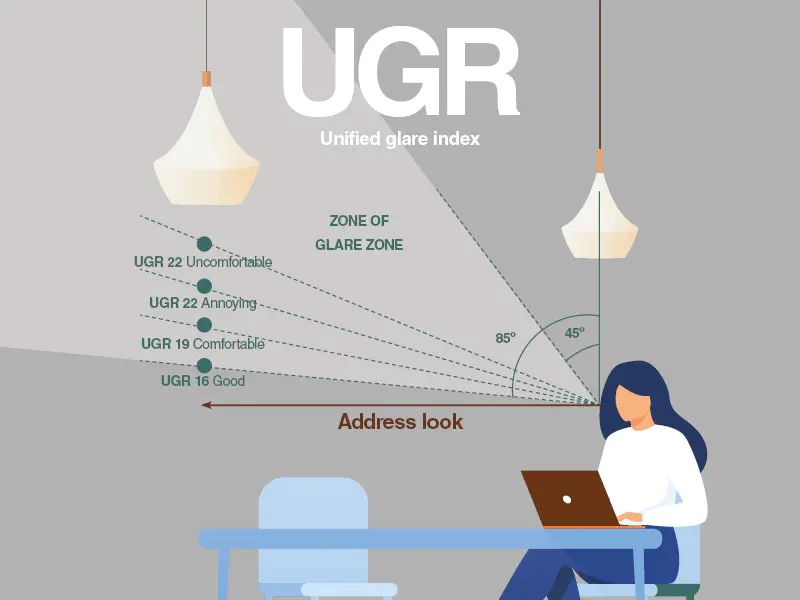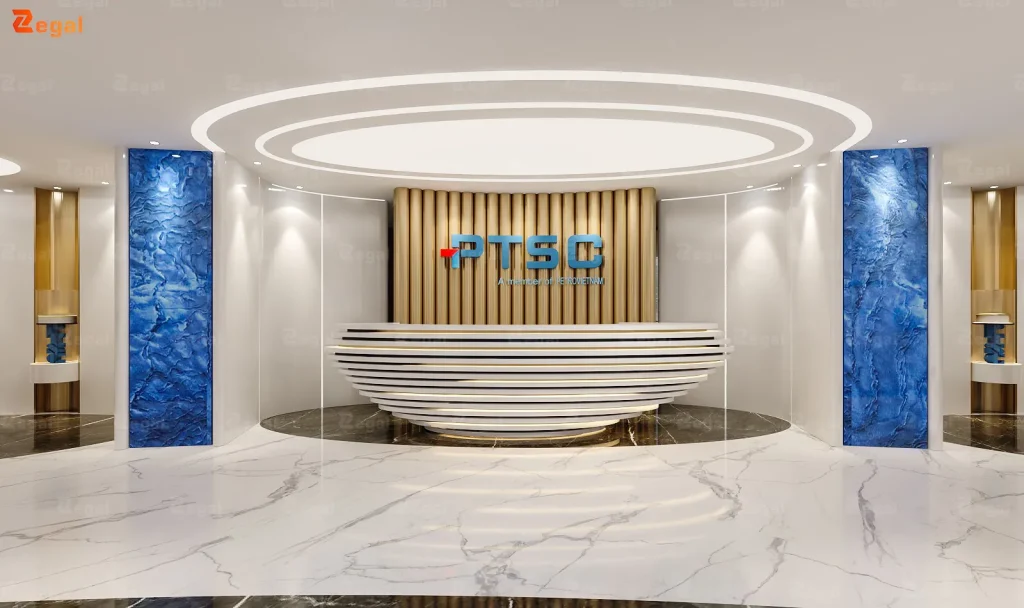The Unified Glare Rating (UGR) is a crucial factor in lighting design, controlling glare to create a comfortable and eye-friendly environment. But what exactly is UGR, and why does it matter? Let’s explore this in detail with Zegal!
1. What is the Unified Glare Rating (UGR)?
The Unified Glare Rating (UGR) is a metric used to assess the discomfort caused by glare from lighting fixtures in work or living spaces. Established by the International Commission on Illumination (CIE), UGR measures the level of glare a light source can cause to an observer from specific angles and distances.

Excessive glare can lead to eye discomfort, reduce concentration, and cause fatigue. This is particularly significant in environments requiring high focus, such as offices, schools, or hospitals.
2. UGR Scale
UGR is calculated on a scale from 10 to 30. The higher the UGR value, the greater the glare and its impact on users:
-
- UGR ≤ 10: Negligible glare, providing soft and comfortable lighting.
- UGR 10 – 19: Mild glare, suitable for workspaces such as offices or classrooms.
- UGR 20 – 25: Moderate glare, which can become uncomfortable with prolonged use.
- UGR 26 – 30: Severe glare, causing immediate discomfort and significant performance impact.
This scale helps designers choose appropriate lighting solutions to ensure comfortable illumination for various spaces.

3. Why is UGR important?
- Lighting with a high UGR can cause eye strain, dryness, and fatigue, directly affecting vision and user comfort.
- Low-UGR lighting creates a comfortable environment, reducing fatigue and improving focus in work or study areas.

- Excessive glare can lead to discomfort and even headaches during prolonged exposure.
- Choosing lighting systems with suitable UGR values enhances aesthetic appeal and provides a pleasant atmosphere.
- In workplaces requiring high concentration, controlling UGR is essential to prevent accidents caused by excessive glare.
4. How is UGR calculated?
UGR is determined by a complex formula that considers various factors, including the brightness of the light source, the observer’s angle of view, and reflective surfaces in the space. While the formula may be complex for non-specialists, the general principle is that higher UGR values correspond to greater glare.

In this:
- L_b: The average brightness of the environment (cd/m²).
- L_i: The brightness of the i-th light source (cd/m²).
- Ω_i: The angle of projection of the i-th light source as seen from the observer’s eye.
- p_i: The positioning factor of the i-th light source.
Although this formula can be quite complex for non-experts, the key takeaway is that the higher the UGR, the greater the glare, and vice versa.
5. Recommended UGR values in modern lighting
International standards recommend UGR ≤ 19 for optimal lighting in workspaces:
- Offices: UGR ≤ 19 to ensure soft, eye-friendly lighting for prolonged work.
- Classrooms: UGR ≤ 19 to provide a conducive environment for students and teachers.
- Clinics: UGR ≤ 16 for clear but comfortable lighting for medical staff and patients.
For recreational or residential spaces, UGR ≤ 22 is considered acceptable as these environments do not demand high levels of concentration.

6. Impact of UGR on eye health
High-glare lighting forces the eyes to constantly adjust, leading to fatigue, discomfort, and reduced focus. Prolonged exposure to lighting with high UGR can cause dryness, headaches, and even temporary vision impairment.

7. How to minimize glare (UGR)
7.1 Proper lighting installation
Position lights strategically to prevent direct exposure to users’ eyes. Use diffused angles and shielding components to reduce direct glare.
7.2 Choose LED lights to limit glare
LED lights with advanced technology effectively control light dispersion, reducing glare. Many modern LED lights are designed with low UGR values, making them ideal for comfortable lighting.

7.3 Utilize stretch ceilings for glare control
Stretch ceilings are an innovative solution in lighting design, significantly reducing glare. These ceilings use special materials to evenly diffuse light, creating a soft glow that eliminates direct glare.

This solution not only improves light quality but also enhances interior aesthetics. Stretch ceilings maintain low UGR levels, making them perfect for offices, living rooms, showrooms, and luxurious spaces requiring eye-friendly lighting.
8. Conclusion
UGR is not just a technical parameter but a crucial factor in determining lighting quality and user health. Selecting lighting systems with low UGR values protects eyes, boosts productivity, and enhances the quality of living and working spaces.
For further consultation, please contact Zegal Vietnam:
Zegal Hanoi
112 Vo Chi Cong, Nghia Do Ward, Cau Giay District, Hanoi
Zegal Ho Chi Minh
319 – C9 Ly Thuong Kiet, Ward 15, District 11, Ho Chi Minh City
Hotline: +84969 14 6688




